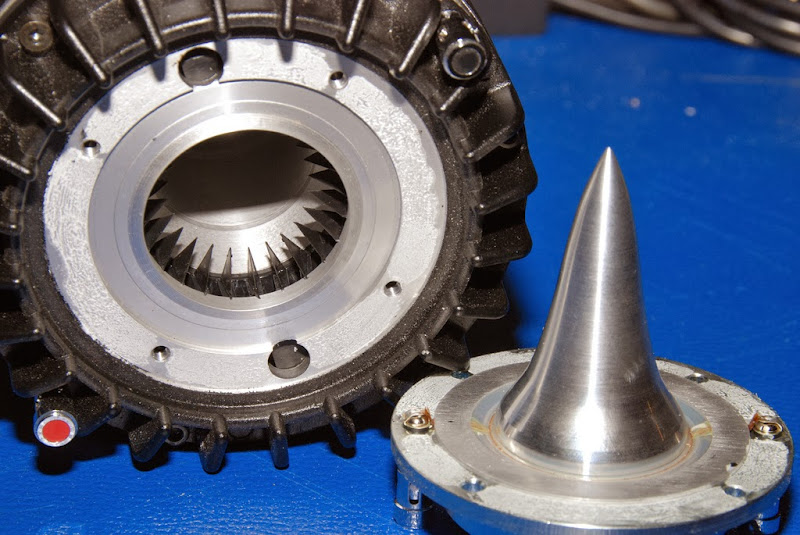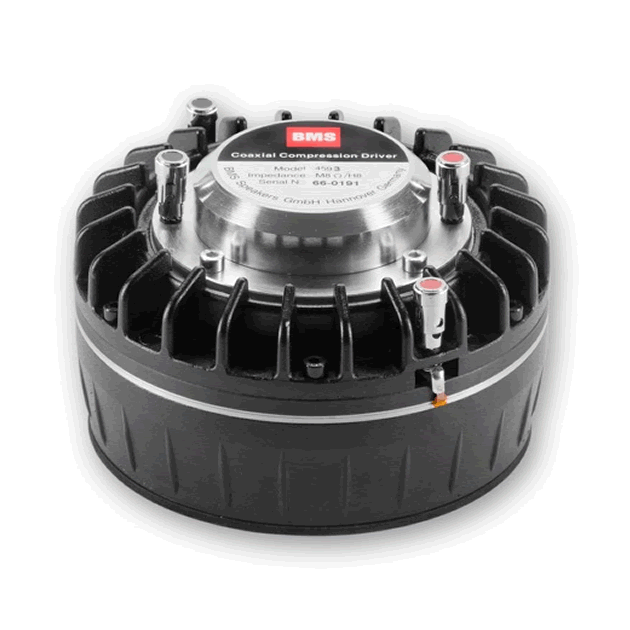High frequency compression 1' and 2' drivers by Eminence, JBL, Peavey, RCF, Beyma and P Audio. COMPRESSION DRIVERS. NEW FAITAL PRO 1.4' HF COMPRESSION DRIVERS NOW IN STOCK.
NEW RADIAN 1.4' & RADIAN 2' LIGHTWEIGHT NEODYMIUM MID FREQUENCY COMPRESSION DRIVERS. THE RADIAN 745NEOPB HAS THE STANDARD 4' MOUNTING BOLT PATTERN AND ALSO THE MEYER SOUND 3.5' BOLT PATTERN. NEW BEYMA, & ' HF DRIVERS WITH EXCLUSIVE PM-4 POLYMER DIAPHRAGM. NEW BEYMA & PLEATED TWEETERS IN ATTRACTIVE SILVER AND BLACK FINISHES. NEW RADIAN BERYLLIUM DIAPHRAGM HIGH FREQUENCY DRIVERS.

SEE BELOW. NEW RADIAN HIGH FREQUENCY PLANAR RIBBON DRIVER GENUINE EMINENCE 1' - HIGH FREQUENCY COMPRESSION DRIVERS.
1' Throat High Frequency Driver. 50 Watts RMS @ 2.5kHz. Screw-on Type. Available 8 ohms Item Price: $ 34. 99. 1' Throat High Frequency Driver. 50 Watts RMS @ 2.5kHz.
Bolt-on Type. Available 8 ohms Item Price: $ 34.
99. NEW 1' High Frequency Driver. Ring Radiator Design. Newly Designed Phase Plug. Lightweight Neodymium Magnet.
Weighs only 1.7lbs. 45 Watts AES @ 1.8kHz. Smooth Frequency Response & Low Distortion. Available in 8 ohms Item Price: $ 89.99. NEW 1' Throat High Frequency Driver.
85 Watts AES @ 1.5kHz. Bolt-on Type. Available 8 Ohms Only. Flat Across Its' Frequency Range 8 Ohms Item Price: $89. 99. NEW 1' Throat High Frequency Driver. 85 Watts AES @ 1.5kHz.
Screw-on Type. Available 8 or 16 Ohms. Flat Across Its' Frequency Range 8 Ohm Version Item Price: $89. 99 16 Ohm Version Item Price: $89.
Bms Coaxial Compression Driver For Macbook Pro
Schoolboy q sza ty dolla $ign more confirmed for machine. Hi, yes throat angles are important and often ignored. The tannoy VQ is a type of oblate spheroid, basically a conical horn with a smooth short transition as close to the throat as possible, a very similar initial start profile to the peavey quadratic waveguide horns. For upper end off axis response there is no better than a type of oblate spheroid, the only drawback is the need to have a shelving filter to boost 6db the upper end frequencies, but at least unlike normal constant directivity horns the beamwidth doesn't narrow anything like them on an OS or strsight conical. There is no set throat flare rate and all comps vary, for single stack a wide dispersion conical or OS would be great for off axis, but will also array better due to minimal beaming. Here's my list of known exit angles: CP750Nd – 24º CP850Nd – 7º CP755Nd – 12º60’ SMC65Nd – 15º CP385Nd – 16º30’ cd10 - 16º30’ SMC225Nd – 13º1’ B&C 1' DE250 14.6° DE10 7.7° DE12 24° DE400TN 20.7° DE400 31° DE500 17° DE200 9.9° 2' DE85TN 34.5° DE750TN 22° DE950TN 17° BMS 4524 20º 4538 21.8º 4544 20.6º 4550 14º 4554 26.7º 4555 30º 4590/4590p 1º 4591 1º 4540nd 14º 4552nd 24º 4592nd 10º 4594nd 3º 4595nd 10.8º cheers al. If you follow the link to minaximal’s thread on horn construction, it gives a good idea of how to go about constructing a round horn. A couple of things that I have found are that mdf makes a better plug and don’t use hub pullers to release the horn from the mould.

Due to how ply is constructed, when you turn it on the lathe, you are cutting along the grain, then across the grain, then along the grain If you are not careful you can get little ridges forming as you turn the plug. Mdf is more consistent. I always glue and screw the layers together and coat the wood with resin once shaped. I then finish off with increasingly finer grades of wet and dry up to 1200 grit. Finally I use T-cut before polishing with a release wax.
Once I have made the initial horn from the turned plug, I make a second mould from that and put the wooden plug away. Using hub pullers concentrates all the pressure on two or three small points on the flange which can cause cracking.
One way round this is to make an extremely thick flange. I use a frame that supports practically the whole area of the flange and then use a steel bar fractionally smaller than the throat and tap out the mould with a hammer.
I use both wax and release agent, and rarely have problems with sticking moulds. If you go with this method, ensure that you polish all traces of wax off the mould before applying the PVA release agent. If you have problems with the release agent not flowing, you can reduce the surface tension by adding a few drops of washing up liquid; this stops it beading. There were some useful videos by hornmaster showing how the horns were made once the mould had been finished. Before you get to all of the above you need to design your horn.
Call me cynical, but I would suggest that the throat angles of compression drivers have more to do with the distance from the diaphragm/phase plug exit and the throat exit, which has to be one of the standard sizes. The actual diaphragm size also comes into this too. One of the advantages of designing your own stuff is that you get to decide which areas of the design can be compromised and which cannot. There is a lot of information about the different aspects of design out there on the internet so I won’t go into any great detail at the moment. Exponential and tractrix horns give increasing directivity with increasing frequency.
This compensates somewhat for the fall off in power response to maintain a level on axis frequency response. Conic horns (this includes the OS and similar horns) have a more constant coverage but require more compensation eq to give a flat frequency response. Abrupt changes in the flare profile (line array slots and traditional CD horns) will introduce ripples in the response, but may enable better pattern control. The size of the horn will determine how low a frequency the horn will maintain good pattern control. Depending on what you are using in the frequency band below the horn, it is sometimes better to lose some control so that the polar response of the two frequency ranges match at the crossover point. For one off projects where the horn is designed for just the one box, look at the system as a whole and try and maintain an even power response through the crossover region. If possible, build and measure the mid section below the horn to give you a good idea of how low the horn needs to go and how to match up the dispersion patterns.
As you are designing the horn. You have more flexibility that way rather than designing the horn and trying to match that with a suitable cone mid driver.